Kodak V1073 and V1273 Review
Kodak V1073 and V1273
Kodak jumps on the touch-screen bandwagon.
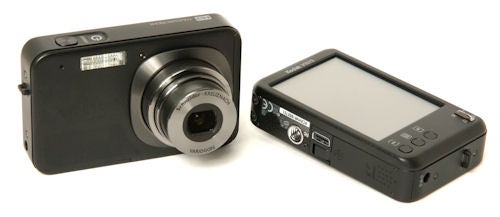
Verdict
Like robots, flying cars and houses on the moon, touch-screen controls are one of those things that are simply essential for any properly imagined future. The trouble is that although touch screens look very groovy and sound like a great idea in theory, in practice there are very few occasions when a touch-screen interface is a real improvement over good old-fashioned buttons.
Unfortunately since the Apple iPhone came along, every industrial designer in the world has gone touch-screen crazy, and those working in the digital camera industry have got the bug worse than most. In a way you can see their point; digital cameras already have LCD monitor screens and numerous buttons, so how hard could it be to combine the two? Most of the major camera manufacturers now have at least a couple of touch-screen models in their line-up, for better or worse, and so it’s with a sense of resigned acceptance that I find myself testing a touch-screen camera from Kodak. Or rather, two cameras.
The Kodak V1073 and V1273 are two new models in Kodak-s prestige V-series of high-spec premium compacts. The V1273 has a 12-megapixel 1/1.72 inch CCD sensor, a 3x zoom lens, 6400 ISO maximum sensitivity and HD movie capability. The V1073 is practically identical, apart from its 10-megapixel 1/1.63 inch sensor and 8000 ISO maximum sensitivity, so I thought I’d save a bit of time and review them together.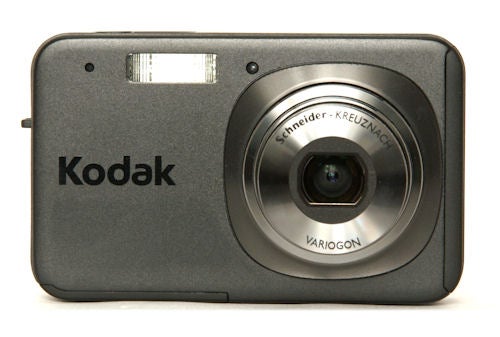
Of the cameras that I’ve reviewed recently, the most obvious comparison is with the Sony Cyber-shot DSC-T2 (£155). Although the Sony is only 8.1 megapixels and has a 2.7-inch monitor, it too has a 3x zoom lens, a touch-screen interface and a stylish modern look.
There’s no denying that the V1073 and V1273 are great looking cameras. Both models come in either matt grey or matt black, with gunmetal and black details. Both share the same all-metal bodyshell, a rather minimalist rectangular slab shape with rounded corners. It is quite small at just 93.3 × 57.9 × 21 mm, although at 148g minus battery or card it is heavier than it looks.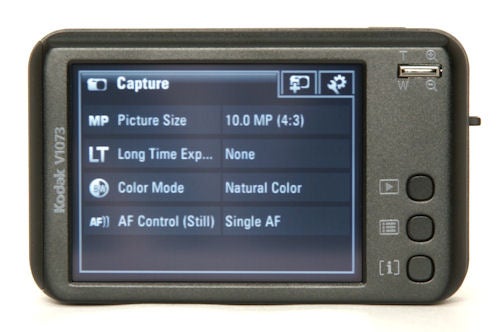
The top plate carries the illuminated on/off switch and the shutter button, which is flat, smooth and mounted almost flush with the body, making it difficult to feel with your shooting finger. On the back of the camera are only three buttons, for playback mode, display mode and menu, and the zoom control, which is thin up-down rocker switch. Those three buttons are also mounted flush with the surface, and have to be pressed in with the edge of your thumbnail.
Everything else on the camera is controlled via the touch screen interface. As with most cameras employing this technology, I found that even on a three-inch screen the buttons and menu selections were just a little bit too small and fiddly for my large fingers and I was constantly finding myself in the wrong menu, however someone who didn’t have a blacksmith for a grandfather would probably find it easier. The interface uses lots of gradient shading and animations, and looks very slick, but I found it a little slow at times.
One thing I also found slightly annoying was that the camera always starts in the default “Smart” mode, a fully automatic setting with no manual options. I far prefer cameras that remember how you had them set up, so that if the camera switches itself off you don’t have to spend time putting it back into program mode and turning the flash off.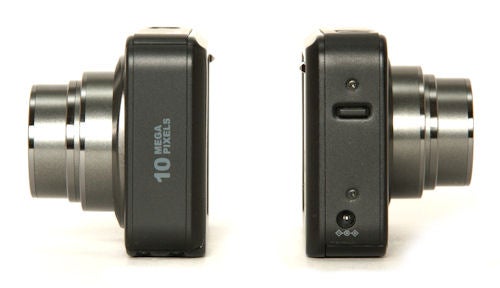
All of these small niggles pale into insignificance however, when compared to the major problem with both of these cameras. Outdoors in daylight, even on a cloudy day, the image on the monitor is almost invisible. I think the problem is that the touch-sensitive surface of the screen is slightly opaque, and reflects the ambient light more brightly than it transmits the light from the monitor behind it. Indoors or at night this isn’t a problem, but outdoors it renders the monitor almost useless.
Not surprisingly the overall performance of both cameras is virtually identical, which unfortunately means that they both suffer from the same problems. Both cameras start up in a little under three seconds, which is a bit slow but not critically so, however they take over four seconds to shut down again, which can be a pain if you need to put the camera away in a hurry. However it is the shot-to-shot cycle time that is the major problem. In single-shot mode both cameras can manage a shot every two seconds for the first three shots, but then when you try to take another you get a message saying “Processing…” This takes progressively longer with each subsequent shot, until you’re waiting eight seconds until you can take a picture.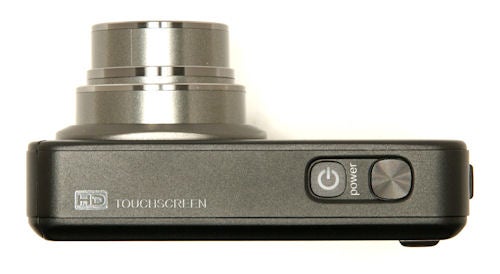
Meanwhile in continuous shooting mode either camera can take three shots in just under two seconds, but then you have to wait nine seconds before you can take another shot, and nearly 30 seconds of writing to the memory card before you can take another burst of three. Bear in mind that in all tests I was using a high speed SanDisk Extreme III SD card. This is extremely poor performance for a modern digital camera.
The autofocus system is fairly quick in most conditions, and the motion tracking AF lock works well, but low light performance was well below average, and generally failed to focus at all in dark conditions despite the presence of an AF assist lamp. Flash coverage was good though, filling the frame well at wide angle, although I think the stated range of 4.1m is a bit optimistic.
Image quality too is not without its faults. For a 12MP or 10MP camera, the V1073 and V1273 produce extremely small image files, both averaging around 2MB. There is no option to change the compression setting, so you’re stuck with JPEG artefacts all over the place, and images that generally look over-sharpened and over-processed. The same criticism applies to noise control, which is heavy-handed even at quite low ISO settings. Colour rendition is bright and lively, as is usually the case with Kodak cameras, and dynamic range is above average for both cameras. However these small positive points are not enough to counteract the many negative points of both the V1073 and V1273.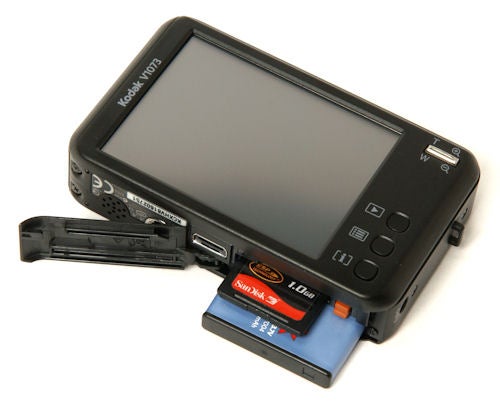
”’Verdict”’
Sometimes what appears to be a technological advance is actually a step backwards. Both the V1073 and V1273 are beautiful to look at, and the touch-screen interface, while a problem for some people, is well designed and operates fairly smoothly. However both cameras suffer from slow overall performance and serious image quality issues. They’re marginally better value than the Sony T2, but not by much.
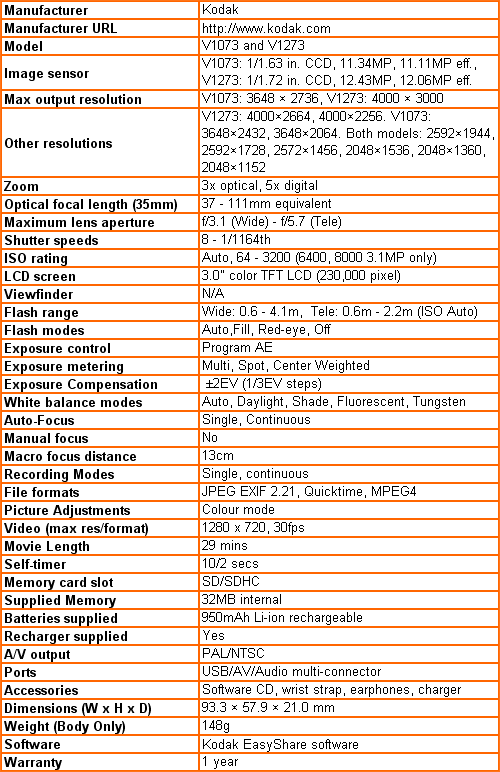
”A range of test shots are shown over the next few pages. Here, the full size images at the minimum and maximum ISO settings have been reduced for bandwidth purposes to let you see the full image, and a series of crops taken from original full resolution images at a range of ISO settings have been included in order for you to gain an appreciation of the overall quality.”
—-
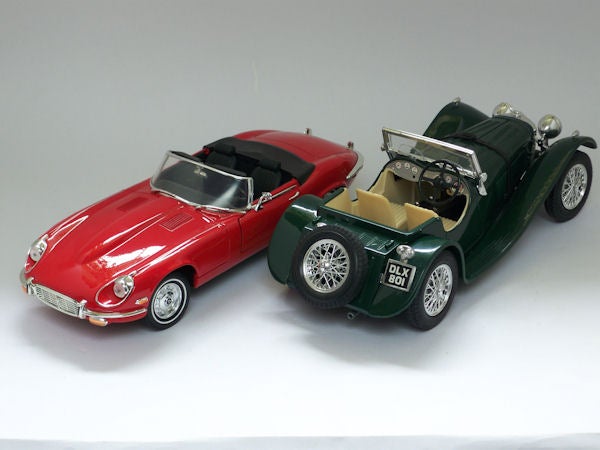
This is the full frame at minimum ISO.
—-
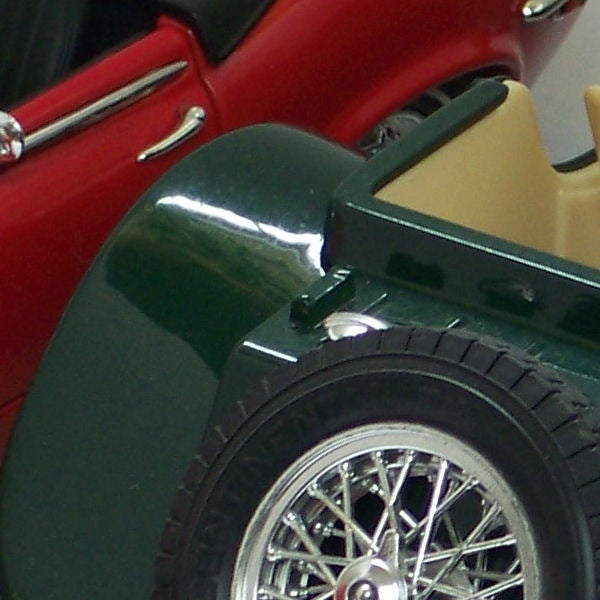
At 64 ISO there is no visible noise, but there are some compression artefacts visible.
—-
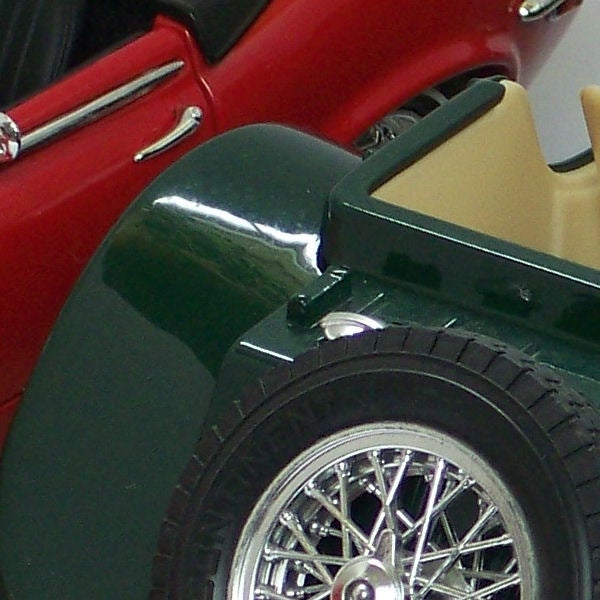
Not much difference at 100 ISO, but there is a little colour noise in the darker areas.
—-
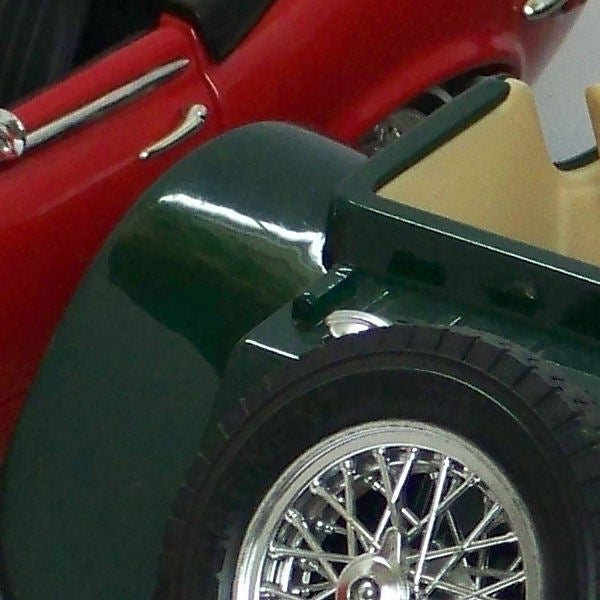
At 200 ISO the overzealous noise reduction is already smearing out fine details.
—-
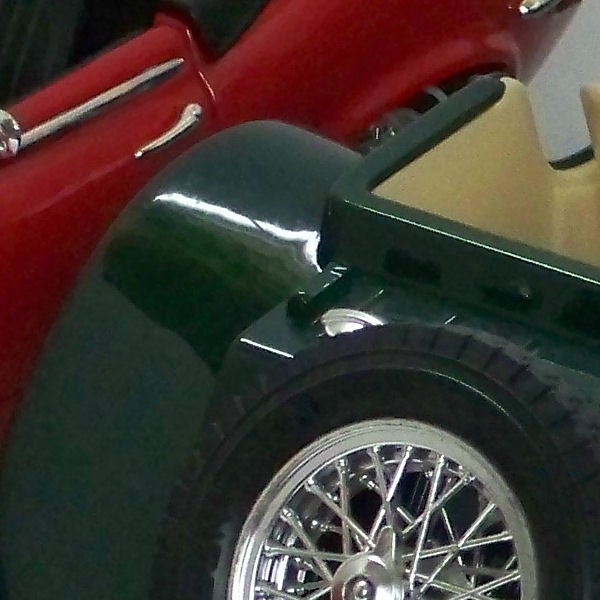
More of the same at 400 ISO.
—-
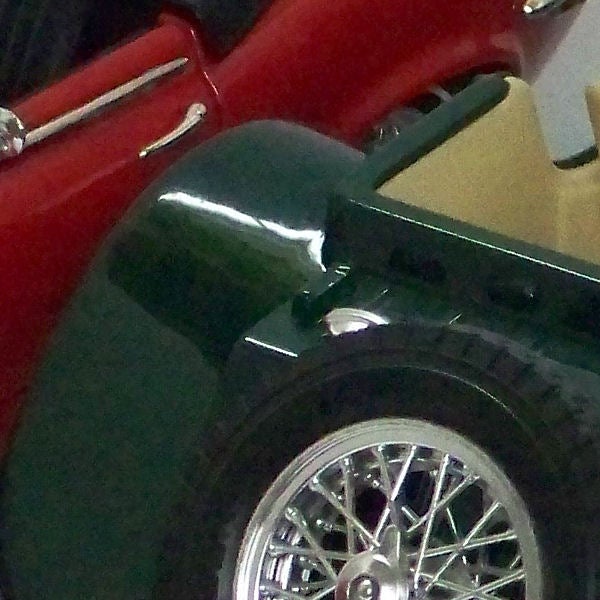
At 800 ISO noise is beginning to break through the barricades, and lots of fine detail has been lost.
—-
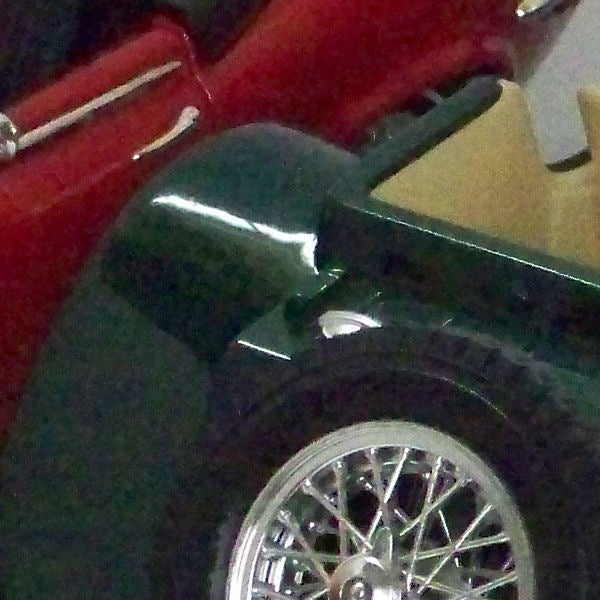
Noise problems galore at 1600 ISO.
—-

Image quality at 3200 ISO is very bad indeed.
—-
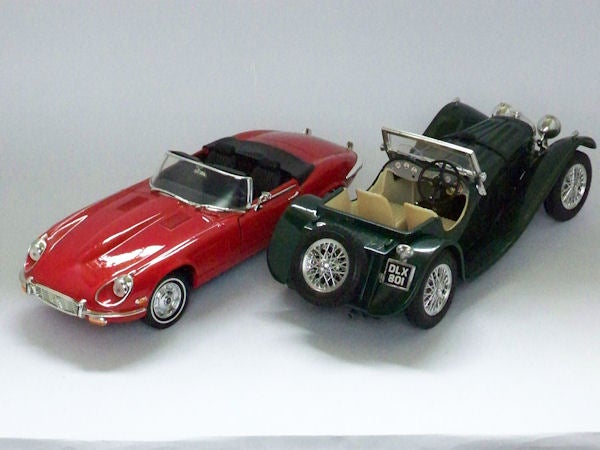
This is the full frame at maximum ISO.
—-
”A range of general test shots are shown over the next two pages. In some cases, the full size image has been reduced for bandwidth purposes, and a crop taken from the original full resolution image has been placed below it to show the overall image quality. Some other pictures may be clicked to view the original full-size image.”
”All test shots are from the V1273.”
—-

Here’s the usual detail test shot of the West Window of Exeter Cathedral, for you to compare with other cameras. See below for a full res crop, or click to see the whole picture.
—-

Although the level of detail looks very good, it is over-sharpened and over-compressed.
—-
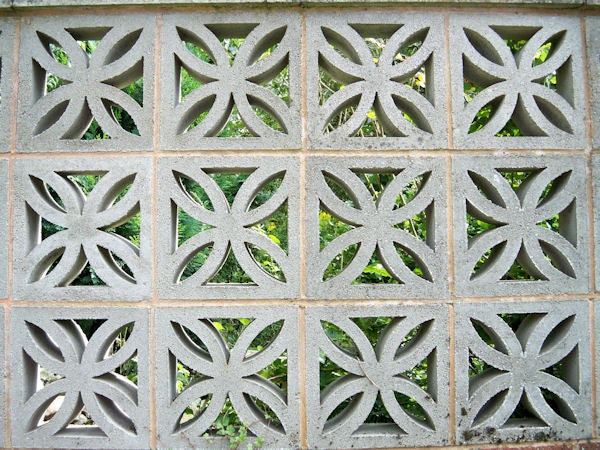
The Schneider-Kreuznach lens performs well, producing only a little barrel distortion.
—-

Centre sharpness is excellent…
—-

…and corner sharpness isn’t too bad either, only dropping off in the far corners.
—-
”Here are some general test shots to help evaluate the camera’s overall image quality, including the zoom range of the lens. Some pictures may be clicked to download the full size original image. ”
—-

The wide-angle end of the zoom is equivalent to 37mm, not that wide at all really.
—-

The telephoto end is equivalent to 111mm.
—-
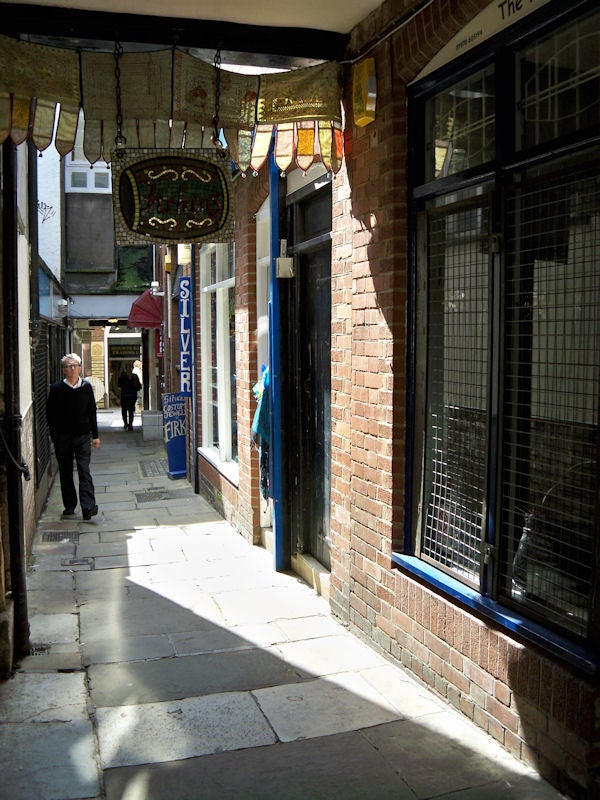
Both cameras have above average dynamic range, although this may have been enhanced in processing.
—-

Colour reproduction is excellent, as usual for a Kodak.
—-

The macro focusing range is 13cm, not as close as most other compacts.
—-
Trusted Score
Score in detail
-
Value 8
-
Image Quality 7
-
Build Quality 8
Features
| Camera type | Ultra Compact |
| Megapixels (Megapixel) | 12 Megapixel |
| Optical Zoom (Times) | 3x |

